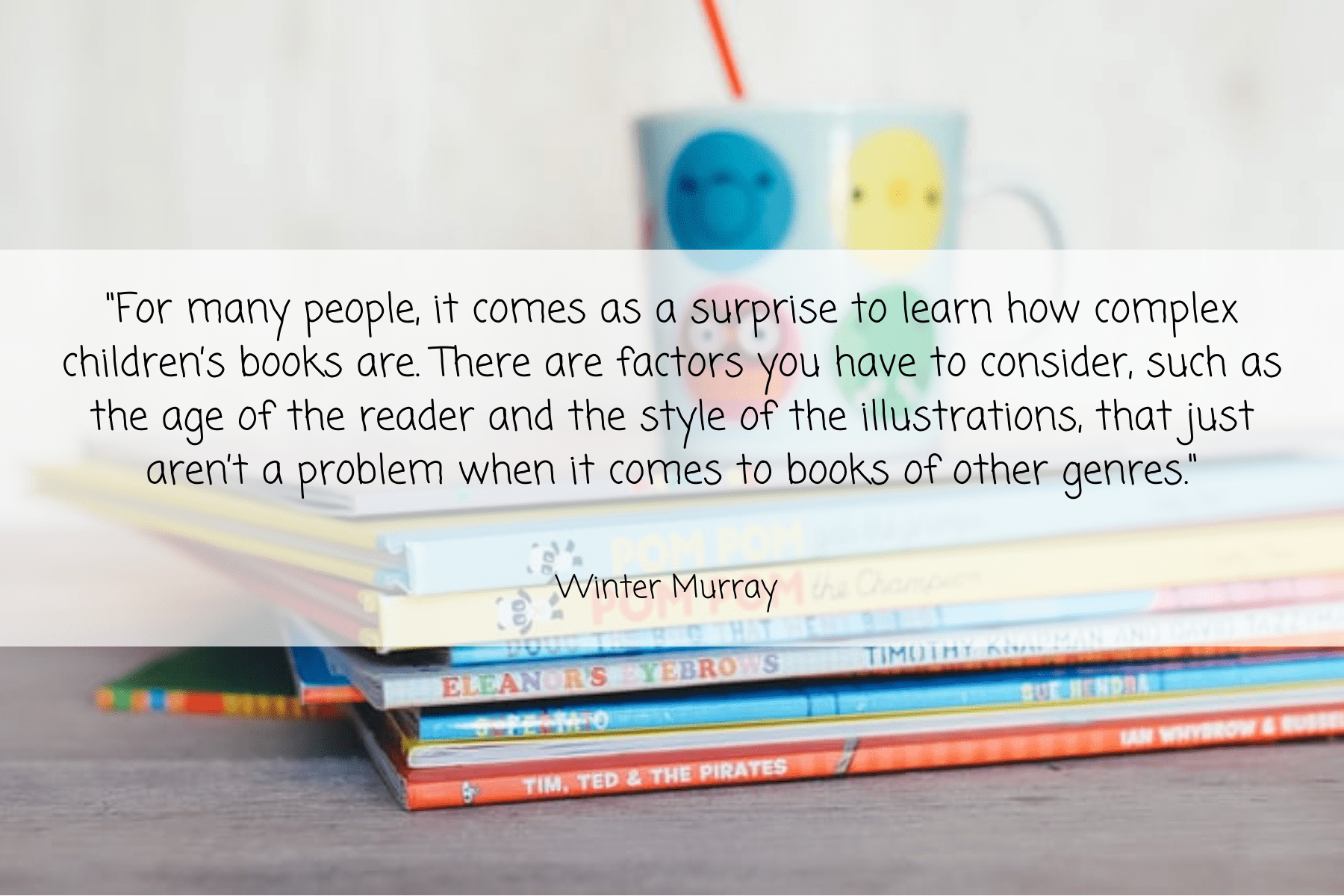by Winter Murray
For many people, it comes as a surprise to learn how complex children’s books are. There are factors you have to consider, such as the age of the reader and the style of the illustrations, that just aren’t a problem when it comes to books of other genres. Accordingly, choosing a font for children’s books is an unexpectedly involved process. Let’s break down some of the things you should consider when choosing fonts for a children’s book.

Legibility:
Legibility is the most important thing to consider when choosing your children’s book font! While your instinct may be to choose a fun, stylized font, it’s important to keep in mind that children are still developing their reading skills, so they may struggle with fonts that are overly stylized. The three main categories of fonts are serif, sans serif, and handwriting. Research is divided as to which type of font is best for use in children’s books, but one rule remains consistent across all three categories: Any font can be an excellent choice as long as it’s clean, clear, and highly legible.
Target Audience:
If you have experience with writing children’s books, then you probably know that one of the things writers take into consideration during the writing process is the age range of their target audience. Are you writing for children aged 3-6? Or 7-10? The age of your reader is also something to keep in mind during the font selection process. Remember that simpler, larger fonts are better for younger children, whereas older readers are better equipped to handle smaller, more complex, more stylized fonts.
Book Theme:
Here’s where you get to exercise some creativity! Think about the topic of your book. Are you writing about something serious? Something fun? These themes can be reflected in your font choice. Maybe a book about a more serious topic calls for a sans serif font. Maybe a rounded serif or handwriting font would be best for a book about a fun day in the park. If you have any words or phrases that you think deserve special emphasis, you can even use a different font to differentiate them from the rest of the text. Keep in mind that if your book is a series, your font may need to be applied to future books as well to achieve a visually cohesive look. Make sure you choose something that will consistently look good!
Illustrations:
Last but not least, you want your font to be visually cohesive with your illustrations. Think about how your font will look in print: Is it dark enough? Will it look balanced with your illustrations? You may also want to consider whether your font size will be easily legible next to your illustrations. Not all 12 pt. fonts are the same!
Even though all these considerations may sound intimidating, remember that out of the thousands of fonts out there to choose from, there’s definitely one that will suit your needs. Using free resources like Google Fonts, you can start mixing and matching to find a font that will be perfect for your children’s book. Above all, try to have fun with the process!

